Wilderness First Aid Medical Training for Adventure Educators
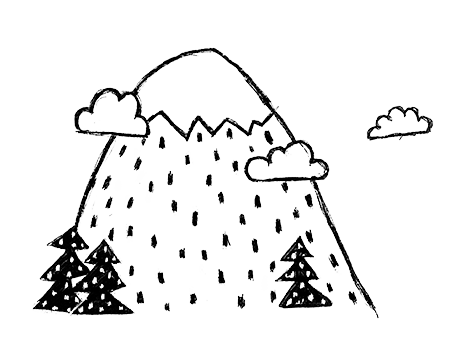
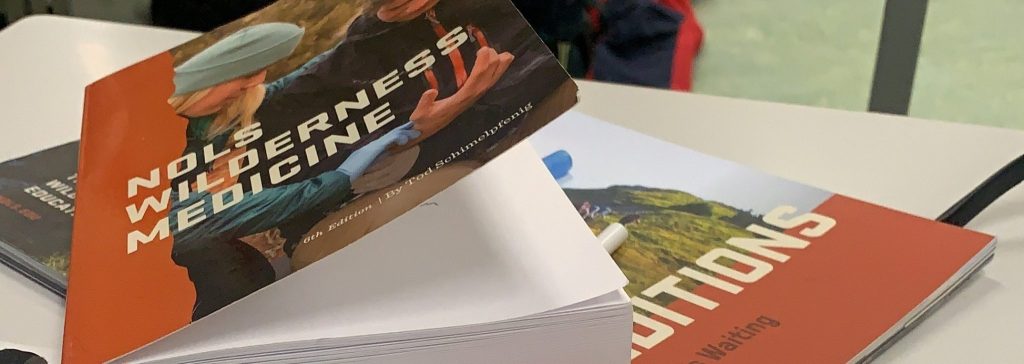
Adventure Education is an active method that happens most of the time outdoors in remote locations. It uses real life situations and activities to develop qualities for individuals, group dynamics and sustainable development. When being outdoors, trying to experience and learn new things, accidents can happen and sometimes help might not be near.
Why is Wilderness Medicine training our choice for Bachelor’s Degree Programme in Adventure and Outdoor Education students and lecturers? In our curriculum, the adventurous methods we offer to our students are kayaking, climbing and summer-, winter, and mountain hiking. All methods include expeditions to authentic outdoor learning environments to experience real-life situations. Expeditions last multiple days and happen in remote locations. Safety lies in the core of adventure education, it’s our priority in the whole programme and our conception of safety includes social, mental and physical safety. The answer is then obvious, we want to be prepared for the worst, prevent it from happening and enjoy our adventures in a safe way.
What is Wilderness Medicine?
Traditional first aid programs are designed for the common medical problems in urban areas with telephones, ambulances and hospitals nearby. In wilderness medicine, these practices are made relevant to medical problems experienced outdoors with available equipment, transportation and communication systems. Wilderness medicine training has become the standard for outdoor professionals and the relevant training for outdoor people (Schimelpfenig 2016).
I took part, as an Adventure Education lecturer, together with two other lecturers in an 11-day NOLS (National Outdoor Leadership School) Wilderness First Responder course in November 2021 at Humak’s Nurmijärvi campus. The course was organised in co-operation with Humak and Crossing Latitudes Inc. and their leading trainer and owner Lena Conlan. Crossing Latitudes is an affiliate of NOLS Wilderness Medicine in Europe and Scandinavia. It has arranged 341 courses since the year 2000 and taught 5426 participants in wilderness medicine. All their instructors are trained by NOLS Wilderness Medicine in the USA. It teaches NOLS international evidence-based curriculum all over the world.
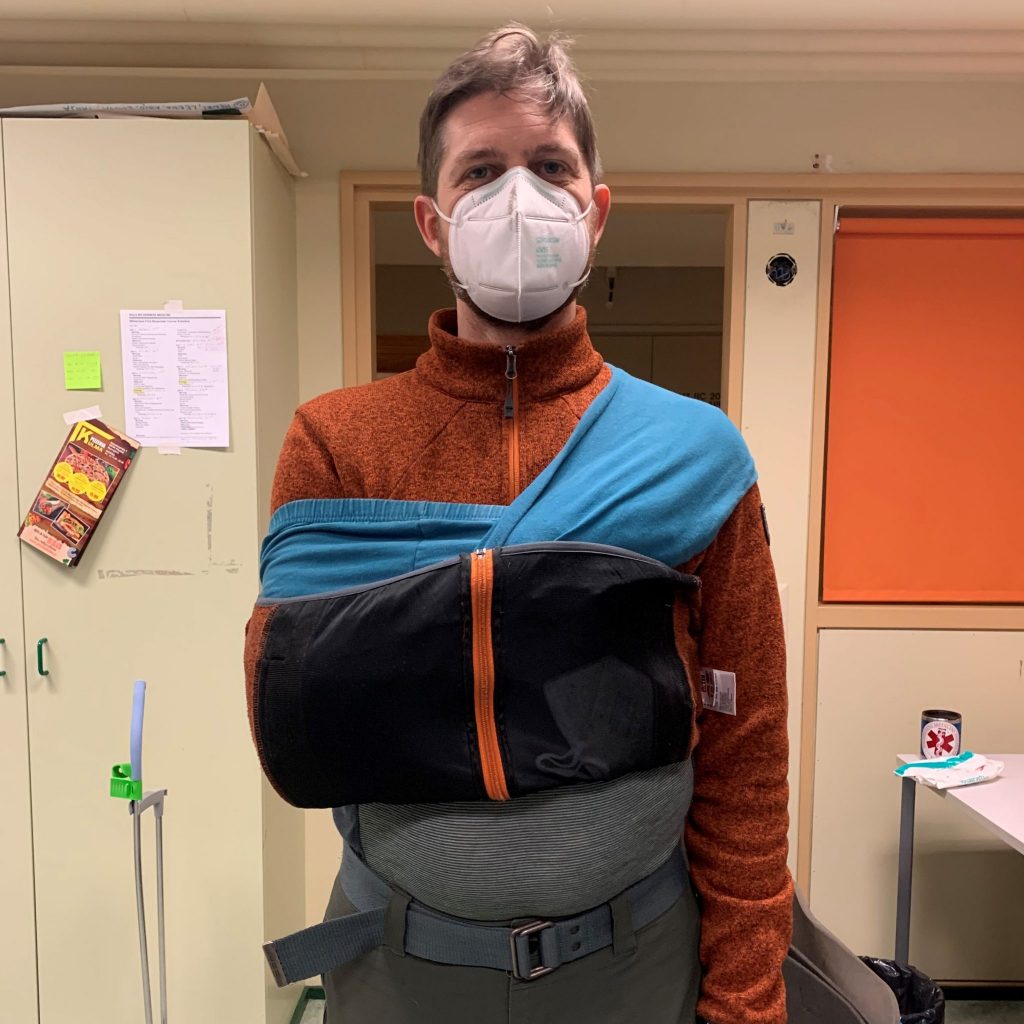
Wilderness First Responder for Adventure Education Lecturers
In Humak we have decided to educate all operative lecturers in the Bachelor’s Degree Programme in Adventure and Outdoor Education to Wilderness First Responder level. It will be a minimum standard for leading lecturers who will work on our expeditions.
Lena Conlan agrees that Wilderness Medicine WFR courses are for folks who spend extended periods of time in remote areas and are responsible for others – because professional emergency care can’t come right away.
”To become a leader, you need to learn how you yourself handle various situations in the wilderness. You don’t learn this over a weekend. Therefore, NOLS expeditions traditionally were at least 30 days long. The same goes for first aid – Wilderness First Responder (WFR) is 11 days long because we have to practice many times to do the right thing, we need to be challenged in different situations and weather conditions with different people. You can’t just read a book – you need to do it over and over”.
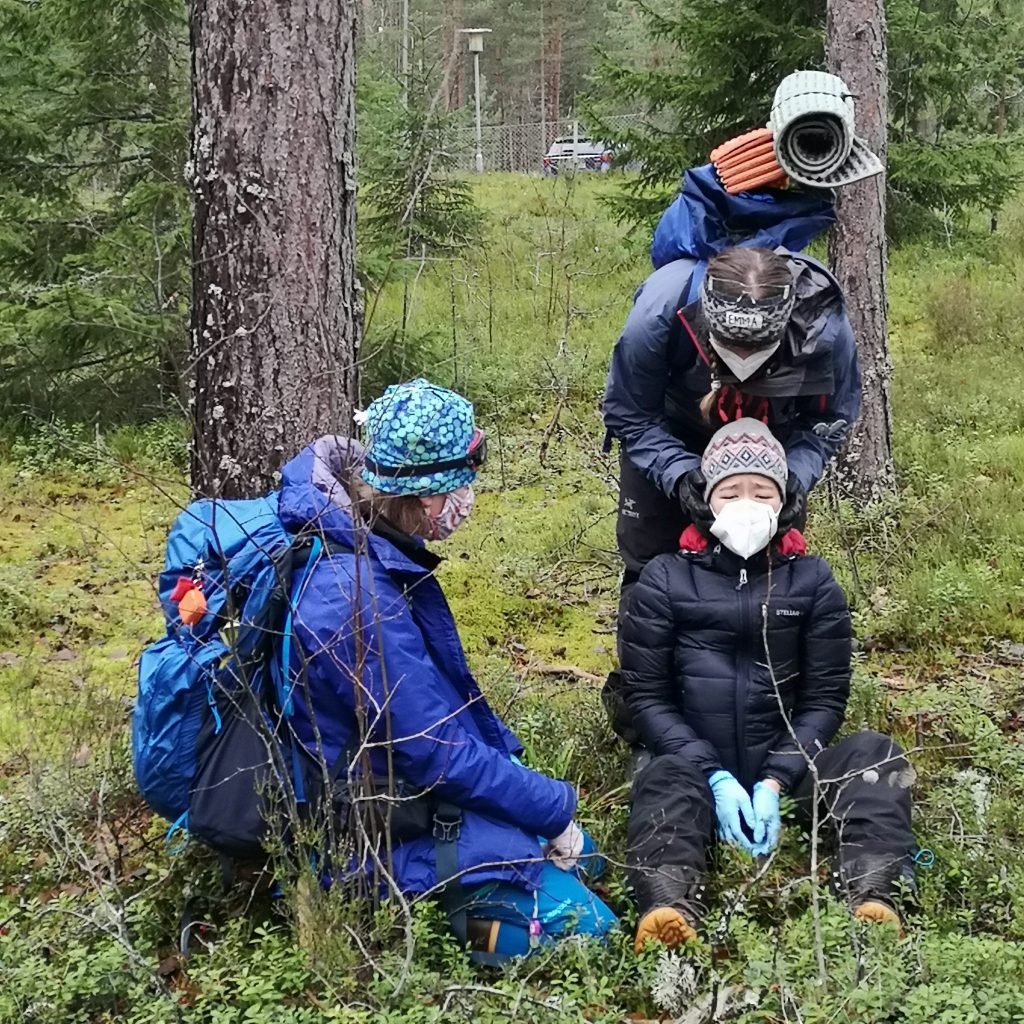
First Responder Responsibility
”If you guide for a living, you are responsible for friends or clients in the wilderness. As a guide, you don’t need to just have the skills and be an excellent teacher/guide/instructor and communicator – you also need to know how to take care of people if they get hurt or sick … and not according to 20-year-old practices but according to the most up-to-date education. On an WFR course we cover topics like mental health, altitude illness, neurological problems, urinary & reproductive issues and much more. Part of a WFR course also is leadership, communication, making good decisions and long term care of injured people” says Conlan.
After the WFR course in November the whole operative Adventure Education lecturer team of six persons has now educated themselves to be ready if it gets serious. We’ve had accidents and evacuation situations in the past during our expeditions and the high level of wilderness medical training has definitely made the decision making and safety awareness better. When you have a professional wilderness medicine education and you have practiced the skills over and over again, you start to feel more capable and ready to deal with the possible hard situations.
Wilderness Medicine Training for Adventure Education Students
As part of the Bachelor’s Degree Programme in Adventure and Outdoor Education, Humak organizes together with Crossing Latitudes a 3-day Wilderness First Aid (WFA) course for Adventure Education first year students. In the program’s curriculum, it is an important piece towards the professionalism for a future Adventure Educator.
”Adventure Education students are folks enjoying the great outdoors. They might like back country skiing, climbing, canoeing, snow mobiling or traveling to far and wild places. If the great outdoors is your interest, we think having wilderness first aid training should be too!” says Conlan.
Lena Conlan tells that on a WFR and also on a Wilderness First Aid course, you will learn how to do good patient assessment, recognize and treat true life threatening injuries and illnesses. You also learn to recognize when it is not a true emergency – what to do and how to carry on with your trip. Prevention is obviously the best, but accidents do happen and we all like to be prepared to help others in need. I agree and would say that these decision making and medical skills are highly important for an Adventure Educator.
Wilderness Medicine Education and Future at Kiljava
Crossing latitudes has taught many 3-day WFA courses at Kiljava. In November 2021, it offered a WFR for the first time and had 18 participants from all over the world.
”The area around the school in Kiljava is excellent for our scenarios. We can pretend someone fell and hit their head, we can set up a mass drowning incident or pretend someone got stuck between some logs and broke their leg … the realistic scenarios we can create are endless. This is what makes our Wilderness Medicine courses unique – we teach evidence based curriculum where half of the time is scenarios outdoors” Conlan describes the location for having a course at Kiljava.
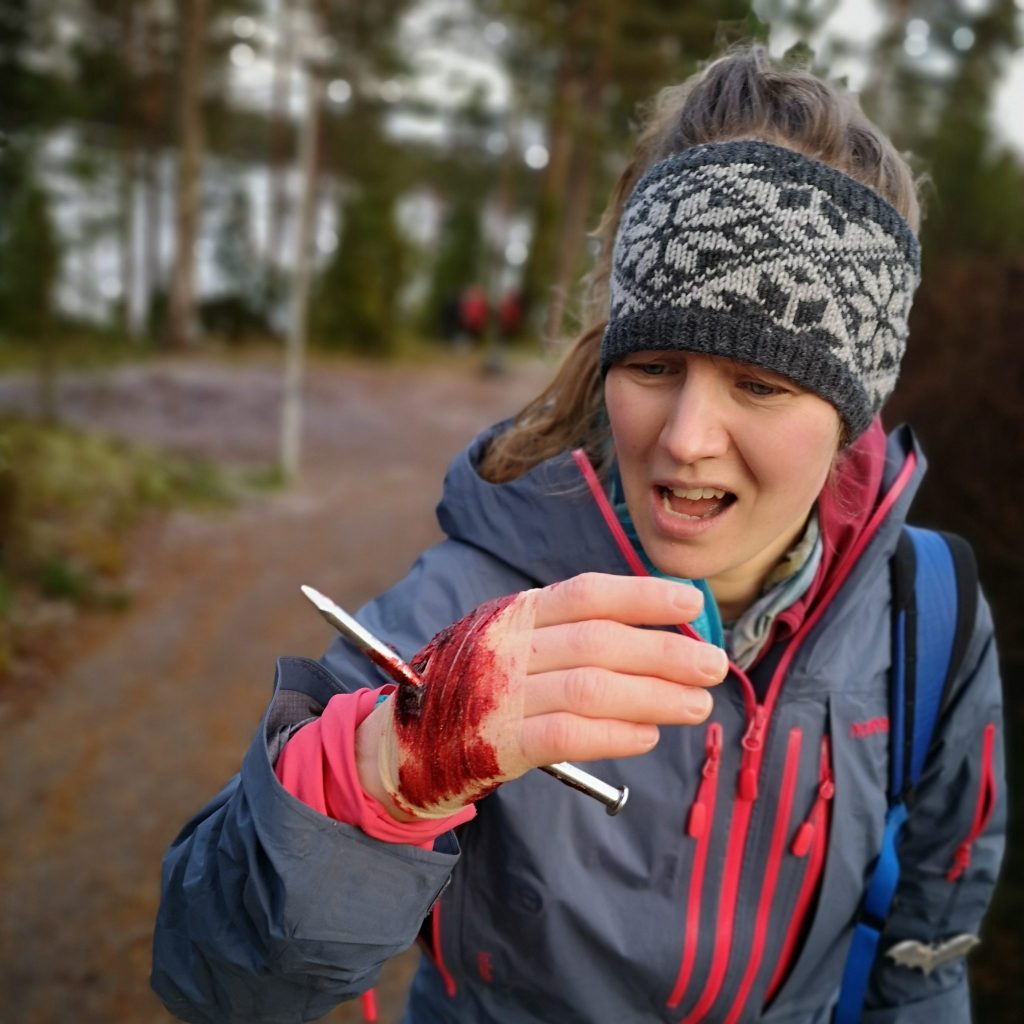
Lena Conlan and other Crossing Latitudes professionals together with Humak Adventure Education are looking forward to future WFA courses for all the Adventure Education students and WFR courses – open to all outdoor guides and outdoor enthusiasts around the world. The plan is to also organize Wilderness First Responder Recertification courses (WFR-R 3-day scenario based refreshers) that anyone with a WFR certificate can participate in. That is how you are able to keep your Responder Certificate valid and that is what we Adventure Education lecturers will definitely do.
”Having training in wilderness medicine will help not only injured people but each student as well. No one likes to stand there helpless – being able to step forward in an emergency will help us gain confidence. By taking a Wilderness Medicine course, you start to look at risk management in a different way” ends Conlan. Having said that, good risk management is the key to safe, successful and enjoyable expeditions. We’re looking forward and feel ready for our expeditions in Adventure Education programme.
See you at Wilderness Medicine courses!
References:
Tod Schimelpfenig 2016. NOLS Wilderness Medicine Sixth Edition. Stackpole books.
Humak Adventure Education: www.humak.fi/en/info/adventure-education/
Crossing Latitudes web: https://www.crossinglatitudes.com
NOLS Wilderness Medicine web: https://www.nols.edu/en/wilderness-medicine/courses/
Text:
Jussi Hynninen, Master of Science (Sport and Health sciences), Senior Lecturer for Adventure Education. Humak University of Applied Sciences.
Lena Conlan, Wilderness Emergency Medical Technician, Owner of Crossing Latitudes Inc.
